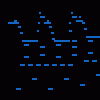No comments yet
Chopin - Andante Spianato in G Major, Op. 22
It was not until 1834 or 1835, in Paris, that Chopin added the introduction, given over to the solo piano. Some commentators consider that the two parts – the introductory Andante spianato and the actual Polonaise – do not suit one another, as they are too different. Yet that very diametrical contrast is what seems to link the two parts together.
The Andante spianato has the character of a nocturne, and at the same time of a lullaby. It forges an oneiric mood, from which the listener is only released by the fanfares of the horns announcing the Polonaise. Spianato means evenly, without contrasts, without any great agitation or anxiety. Thus interpreters are put in mind of the mood of a harmonious moonlit night, a landscape dominated by the reflecting surface of a lake, or even the singing of sirens on gently rocking waves or the immersion in a state of unwavering meditation. The arabesque of the piano, wending its way endlessly above the nocturne-like accompaniment, fades away. New music appears – different, though also hushed: songful and melodious, and lightly tripping, but above all focussed and straightforward, played semplice and entirely without pedal. Pauses are then followed by a return to the music of the interrupted nocturne. But that too dies away, giving way for a moment once more to the concentrated chords of that semplice, now frozen in immobile expectation.
The Andante spianato has the character of a nocturne, and at the same time of a lullaby. It forges an oneiric mood, from which the listener is only released by the fanfares of the horns announcing the Polonaise. Spianato means evenly, without contrasts, without any great agitation or anxiety. Thus interpreters are put in mind of the mood of a harmonious moonlit night, a landscape dominated by the reflecting surface of a lake, or even the singing of sirens on gently rocking waves or the immersion in a state of unwavering meditation. The arabesque of the piano, wending its way endlessly above the nocturne-like accompaniment, fades away. New music appears – different, though also hushed: songful and melodious, and lightly tripping, but above all focussed and straightforward, played semplice and entirely without pedal. Pauses are then followed by a return to the music of the interrupted nocturne. But that too dies away, giving way for a moment once more to the concentrated chords of that semplice, now frozen in immobile expectation.
0 Comments
No comments yet
Link to this sequence: 4399997
Simple
Advanced
Synthesizer
Instrument name
Copy
Load
Clone
Delete
Mute
Solo
Reset
Volume
Delay
Panning
Detune
Reverb
Distort
Equalizer
High
Mid
Low
Bitcrusher
Synthesizer
Resonance (Q)
LFO
1/4
Envelope
A
D
S
R
BPM
Title
Instrument
- Select/deselect notes
- Select/deselect markers
- Save a copy
- Save offline
- Export MP3
- Export WAV
- Export MIDI
- Import MIDI/Sequence File
- Fast graphics
- Invert
- Minor ⇄ Major
- Reverse Selection
- Humanize Selection
- Legatomize Selection
- Fade In Selection
- Fade Out Selection
- Stretch Selection
0
Connect a MIDI keyboard.
Record keyboard and MIDI inputs.
Snap recorded notes to the grid.
Filter recorded notes using the key guide.
Play a metronome. When recording, gives a 4 beat lead in.
OnlineSequencer.net is an online music sequencer. Make tunes in your browser and share them with friends!
Made by Jacob Morgan and George Burdell
·
Hosting 4,550,595 sequences since 2013 ·
Buy us a ☕ ·
Privacy
·













